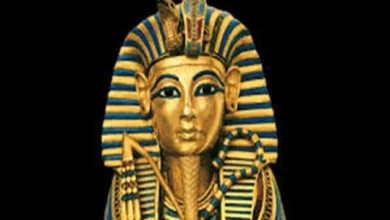How were the Egyptian pyramids built?
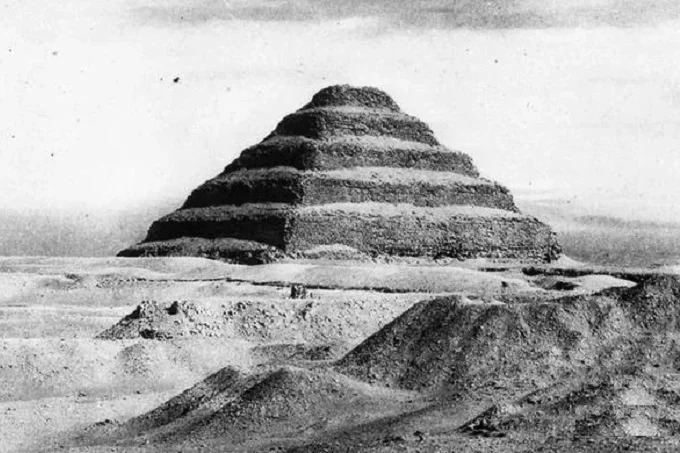
The Egyptian pyramids are regarded as one of the world’s most intriguing constructions. Currently, the scholarly community is aware of 140 buildings, the majority of which were meant for the burial of Ancient Egypt’s rulers, the pharaohs. Large tombs were thought to magnify rulers and confer immortality on them by the ancient Egyptians.
Looking at these massive buildings now, it’s tough to comprehend how they were erected. Even in today’s society, constructing a single high-rise structure may take many years, assuming that strong machinery like excavators and cranes are employed. Because such a procedure was unthinkable thousands of years ago, experts are baffled as to how the ancient builders transported and hoisted the massive stones from which the pyramids were made.
They were meticulously cleaned up on the tombs’ grounds after construction to ensure that no signs of tools remained. Fortunately, the earth is littered with incomplete pyramids…
The Pyramids’ Mysteries
In Saqqara, there are several incomplete pyramids. This is the name of a town in Egypt that also serves as an archaeological museum, approximately 30 kilometers outside of Cairo. The pyramid of Pharaoh Sehemkhet is one of the pharaohs’ incomplete graves. It was not found until 1951, when Egyptian archaeologist Zakaria Goneim unintentionally uncovered the structure’s base. According to the experts’ estimations, the pyramid’s height should have been about 70 meters, but work was abruptly halted for unclear reasons.
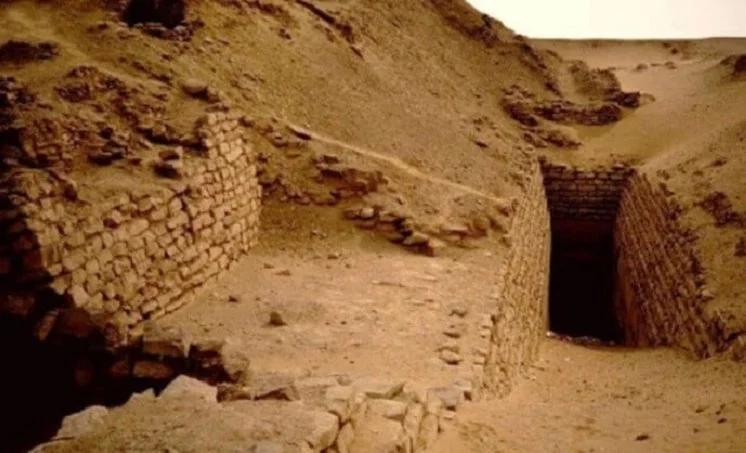
Archaeologists discovered a number of intriguing artifacts around this and other incomplete pyramids. The remnants of auxiliary tools, for example, were discovered on the ground, with which the Egyptians could move stone blocks weighing up to 2.5 tons. Many people believe that the pyramids are made of exactly square stones, but this is not the case; it has long been established that the Egyptians utilized stones of all shapes and sizes. The only regulation was that massive cubes were to be placed to the pyramid’s base, while smaller stones had to be utilized at the top.
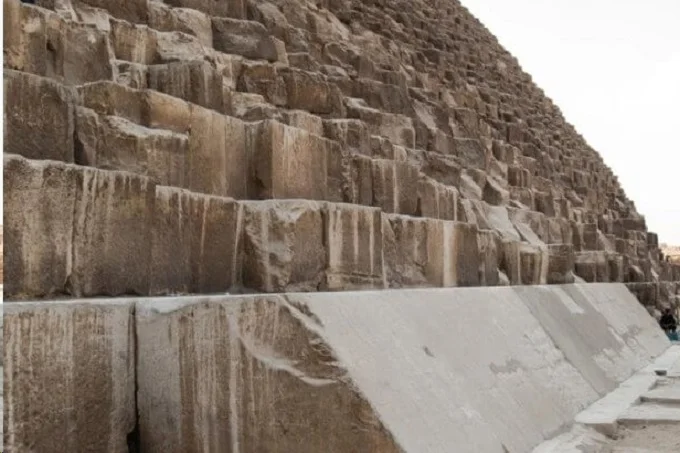
Who constructed the pyramids?
Slaves may have also had a role in the building of the Egyptian pyramids, according to some. However, this myth was previously debunked: ordinary Egyptians were part of the project. During times when people did not need to supervise crops, construction was vigorously carried out.
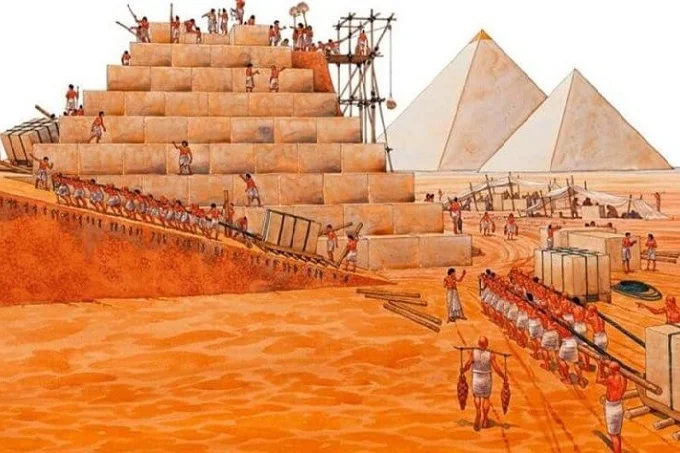
Architects were entrusted with important duties such as designing buildings and keeping track of block folding. The majority of the laborers were employed in quarries, with the most physically demanding activity being the pull and drop of stones. According to experts, approximately 20-30 thousand Egyptians were engaged in the building of each pyramid, according to experts. Because the job was done in the name of Pharaoh, it seems that there were few opponents to this case.
It is reasonable to suppose that all employees need a place to sleep and eat. All of this was offered at special builders’ camps. The remnants of one of them were discovered near the three pyramids at Giza, Egypt, on the Nile River’s west bank. Excavations have been going on in this region since the 1960s. Archaeologists have discovered the graves of architects, foremen, and regular laborers during this period. The architects who made a significant contribution to the design of the pyramids were buried within the tombs, which were considered distinct from the rest of the tombs. Regular employees were buried in ordinary graves as a result.
There were workshops where tools were created on the grounds of the builders’ villages. There were also designated areas for making food for employees, such as bakeries, breweries, and fish drying facilities. On top of that, researchers have discovered places where pharaohs were sacrificed. Ancient Egypt must have been a wealthy country since the locals could afford to give even young animals.
Technologies for pyramid construction
The pyramids’ construction techniques are known not just as a result of archaeological discoveries. They were also mentioned in the historical writings of Herodotus, an ancient Greek historian. In his book “History”, he said that one pyramid took roughly 30 years to construct. So they prepared the road to the pyramid for roughly a decade and then erected the tomb itself for another 20 years.

The historian could no longer see the structure with his own eyes, so he produced a book based on the accounts of individuals who lived two millennia after it was completed. He also lacked a decent mastery of the Egyptian language, making it easy for him to misinterpret the tales.
Nonetheless, it was Herodotus who provided the most detailed description of the process of creating stone blocks for the pyramids, as well as the technologies used to transport them. The stones took on more or less even contours in the quarries as the workmen shaped them with chisels and other metal tools.
People were less burdened since the produced blocks were pulled from place to place using different levers. Regardless, the employees had to collaborate and make combined efforts to raise the massive stones. The diagram below depicts the approximate timeline of events.
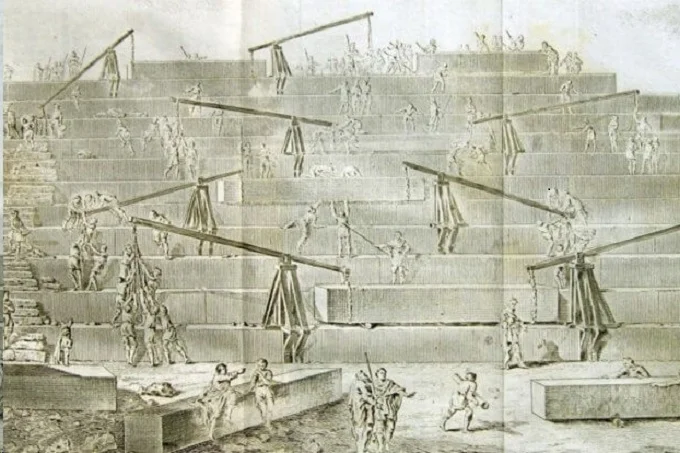
The assumptions based on the inscriptions on the stone blocks seem to be more trustworthy. The indicated bricks are hidden deep inside the pyramids, yet they offer a wealth of information. They were most likely created by ancient foremen who oversaw building operations.
Data on the building workforce and the date of completion of the work was discovered on stone blocks within a variety of pyramids. Archaeologists think that rivalry between distinct groups of laborers may have occurred. Perhaps they were given special treatment because of their speed and quality of work, but there is no proof of this.
Written texts discovered near the ancient port of Wadi al-Jarf off the coast of the Red Sea have provided archaeologists with valuable information on the building of the Egyptian pyramids. They include a wealth of knowledge regarding the building of the Cheops pyramid, but only a portion of it is currently accessible to the general public. Archaeologists discovered from one record that laborers had to harvest a lot of limestone for facing constructions. The pyramids’ outside construction resembles stairs now, yet it was flawlessly smooth and white thousands of years ago. Winds blasted away large layers of limestone over time, so the pyramids are no longer as clean as they once were and are now painted yellow.
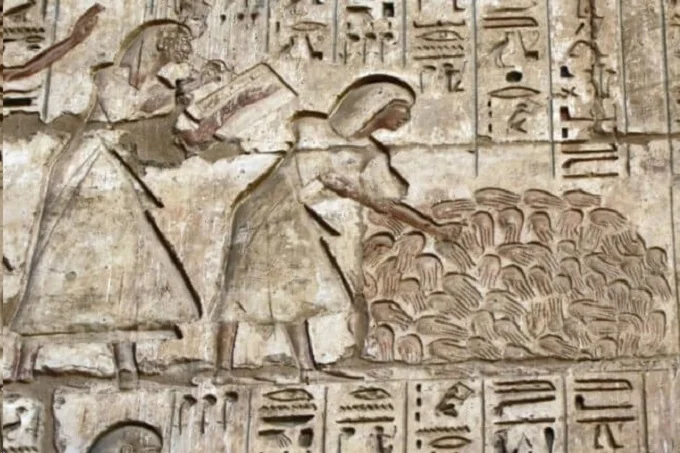
The inscriptions indicate to whom each pyramid was dedicated. The chambers where the pharaohs were converted into mummies were always toward the rear of the building. To keep the top half of the pyramid from crushing down on the burial chamber, “unloading chambers” were erected above the corpse room, reducing the weight. “Horizon of Khufu” was inscribed above the chamber holding Pharaoh Cheops’ corpse. The tomb was not meant for another monarch, since Herodotus exclusively named the Pharaoh’s Cheops, and the Egyptians always referred to him as Khufu.
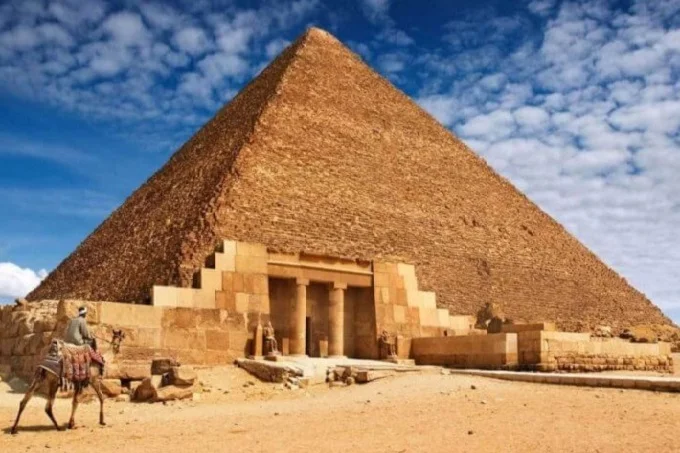
The Egyptian pharaohs’ curse
The tombs in Indiana Jones and Lara Croft movies are filled with traps. In reality, this is fiction; the Egyptians did try to secure the pharaohs’ sleeping sites with buildings, but these could not be considered traps. Archaeologists identified the simplest way for preserving the internal chambers while studying the Cheops pyramid in 2016. They were simple stone block walls that kept robbers out of the burial chamber, which contained not only the Pharaoh’s corpse but also a variety of jewels. So it’s all a hoax.
In addition, several films depict the pharaohs’ curses. However, this is already a step closer to the truth, if only partially. Yes, scientists uncovered Tutankhamun’s tomb in 1922 and discovered an inscription that said, “Those who disrupt the Pharaoh’s tranquillity shall be punished.” Nearly the whole study group perished over the following several months, and people were almost totally persuaded of the curse’s reality. Only one problem: several of the dead archaeologists were over 70 years old and were unprotected against infectious bacteria and fungus that were likely present in the ancient pyramid. As a result, their deaths may be explained not just by a strange curse, but also by simple neglect.
Pyramids and extraterrestrials
You’ve undoubtedly heard various hypotheses concerning pyramid construction if you’ve seen documentaries, particularly on television. One of them, published in The Fort Wayne Journal-Gazette in 1884, claimed that the pyramids were formerly hills. That is, the Egyptians did not have to construct them “from the ground up”; instead, stone blocks were simply placed from top to bottom on the slopes. The inner sand was subsequently removed, revealing corridors and apartments underneath. It seems intriguing and perhaps plausible, yet there is no evidence to support this claim.
According to another idea, aliens assisted in building the Egyptian pyramids. What more is there to think about when even current technology does not allow for such structures’ rapid construction? The accuracy with which the Cheops pyramid seems to face north astounds scientists. The pyramids were also completed in around 30 years, according to Herodotus’ narrative.
Given that some pyramids are made up of 2.3 million stone blocks weighing 2.5 tons, the stones have to be laid every two minutes to complete the pyramid in such a short period of time. And that’s just not conceivable. As a result, some scientists do not rule out the possibility of extraterrestrial influence.
Pyramid building is a strange and fascinating subject in general.


